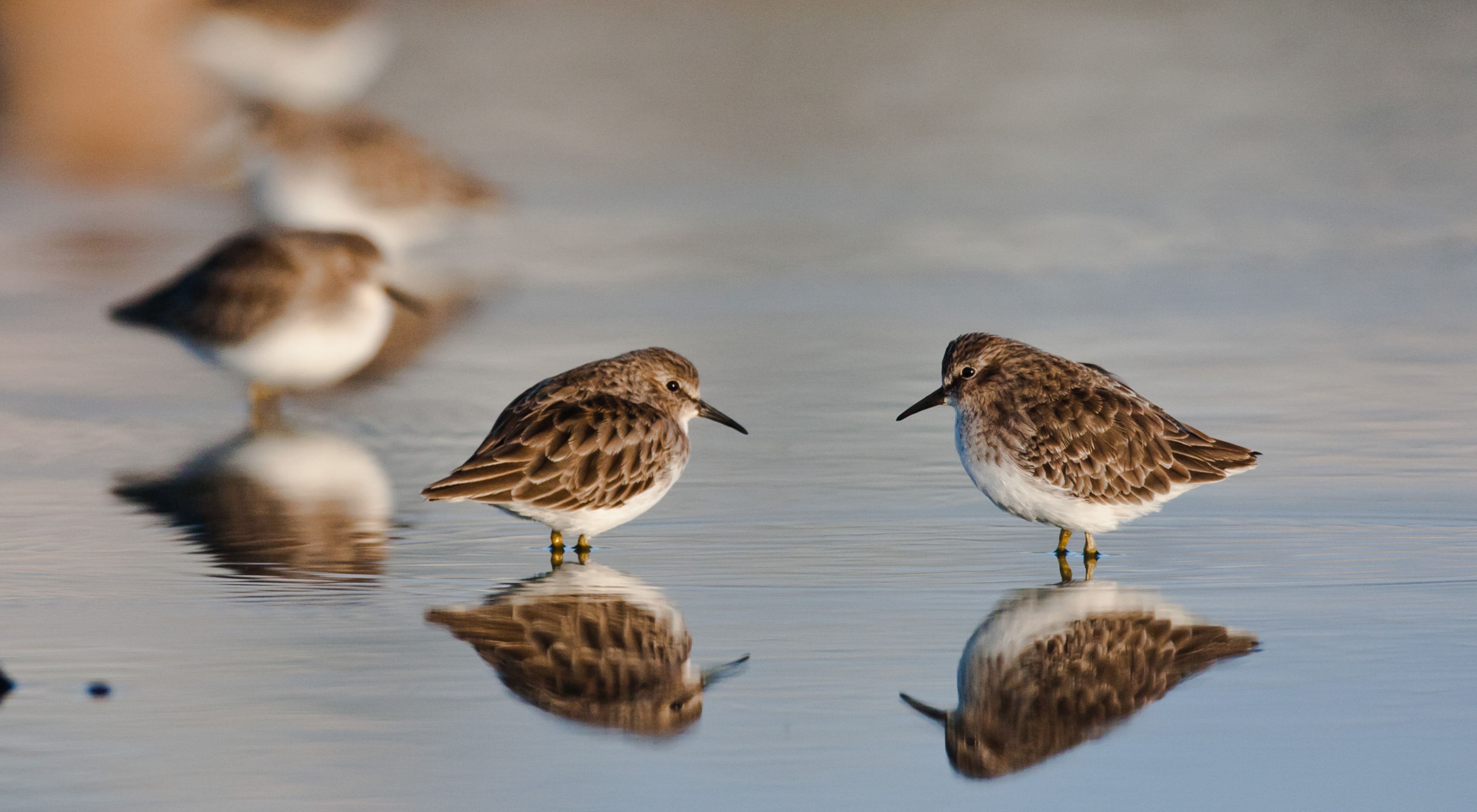This once-thriving river has lost 95 percent of its wetlands.
The San Joaquin River is in need of restoration. The once thriving river has lost 95 percent of its wetlands. Due to current operations of dams, bypasses and diversions, the river no longer flows for roughly 60 miles. Wildlife has been lost as habitat has been reduced to a small fraction of its former extent. And Chinook salmon runs have disappeared from the main stem of the river due to dewatering and degradation.
Despite these conditions, the Central Valley remains a critical segment of the Pacific Flyway, hosting 60 percent of the wintering waterfowl and 20 percent of the waterfowl population in the entire United States.
Now, after decades of neglect, the time is ripe to bring the San Joaquin back to life. The Nature Conservancy's working with partners and local communities to restore the river and create habitat so that birds and fish can once again thrive.
The Opportunity
TNC has the unique opportunity to help bring back a living river in the heart of California. By leveraging the actions of the salmon-focused San Joaquin River Restoration Program, TNC is working to restore wetlands and riparian habitat to benefit migratory birds and a diverse range of species, including the riparian brush rabbit.
Surrounded by productive agricultural lands that produce nearly half of the nuts, fruits and vegetables in the nation, the San Joaquin is a vital part of California’s economy.
The challenge now is to return flows to the river to
- demonstrate that a healthy river can sustain agricultural production
- provide recreational opportunities to valley residents
- support a major migratory route for birds, salmon and other native species
As the number of California residents grows, it is imperative to identify ways to resolve potentially conflicting land and water uses so that living ecosystems and vibrant communities are both possible.
Working with Partners
To embark on this ambitious river restoration, TNC is an active member of two important partnerships.
- San Joaquin River Partnership. A collaboration of 11 conservation organizations whose shared vision is to restore the river to benefit valley communities.
- The Migratory Bird Conservation Partnership. A joint effort with Audubon California and PRBO Conservation Science that works to increase the pace and scale of migratory bird habitat restoration throughout California.
By engaging in these partnerships, TNC is building a network of organizations that can achieve one of the most ambitious river restorations in California.
Conservation on Working Landscapes
In the coming years, TNC will be working to protect and restore habitat along the San Joaquin River. Since private lands provide significant wildlife values and encompass 75 percent of remaining wetland habitat in the state, TNC will build on its past success in other areas of California (and the United States) by reaching out to private landowners along the San Joaquin River with the goal of working together to protect natural resource values and implement wildlife-friendly farming practices that benefit migratory birds.
The San Joaquin River once spilled over the valley floor, supporting tens of millions of wintering waterfowl and shorebirds, 40-pound Chinook salmon and sturgeons twice the size of a man. While much of this habitat has been lost, it is now possible to restore a living San Joaquin River for the benefit of future generations of wildlife and Californians.
Fast Facts
Location: The San Joaquin River begins high in the Sierra Nevada and journeys through the Great Central Valley before exiting to the Pacific Ocean through the Sacramento–San Joaquin Delta.
Size: 330 miles long—the second longest river in California.
Threat: The San Joaquin River has lost 95 percent of its wetlands due to habitat destruction.
At risk: The San Joaquin River and its surrounding lands
- produce nearly half of the nuts, fruits and vegetables in the nation
- host 60 percent of the wintering waterfowl on the Pacific Flyway
- have lost numerous Chinook salmon runs due to dewatering and degradation of the river
Opportunities for Visitors
The River Center
The Center is a trailhead for a 5-mile paved route along the San Joaquin River available to bikers, equestrians and pedestrians.
San Luis National Wildlife Refuge
There are auto tours and viewing platforms through various parts of the refuge—bring your binoculars!
Caswell Memorial State Park
You can camp, swim and enjoy the shade of the oak forest.
Yosemite National Park
The Merced and Tuolumne Rivers, both major tributaries to the San Joaquin, begin in Yosemite National Park.
